Support & Resistance Levels in Binary Options (2025)
Updated: 21.03.2025
Lines, levels and zones of support and resistance in trading: support and resistance levels in binary options (2025)
Gradually, we got closer to the most interesting and effective tool for analyzing price charts (also known as technical analysis) - support and resistance levels. This topic includes not only knowledge about “levels”, but we will also pay attention to trend lines of support and resistance and learn how to correctly identify and use all this.
Why was all this said? In order for you to understand one irrefutable fact - the market cannot be predicted 100%, because... it consists of millions of random variables with their own goals and interests. We see only the final result: an upward trend, a downward trend or price consolidation (sideways).
At the same time, the market (according to Dow theory), carries all the information about the asset for the entire period of its existence. Simply put, the price chart itself tells us what is likely to happen next. By looking at price charts, we can determine:
In professional language, all this is called “zones” - zones of supply and demand. If the desire to earn money is too high among many market participants, then a demand zone is formed - traders begin to enter the market and buy an asset, because they believe that the price will not fall lower and now is the time to “buy cheap”, and later form a strong supply zone and "sell high."
For example, let’s take the favorite holiday of all female representatives - March 8th. Why him? Yes, because it is on this day that crowds of men remember that girls love flowers very much and occupy hundreds of flower shops.
In this case, supply is the availability of a certain product in a particular period of time. The more of a product (the greater the supply), the lower the price of that product. If there are several flower shops nearby in your area, they will be forced to lower the price of their goods so that the client buys it from them.
On the other hand, if there is only one store, but there are many people wanting to buy flowers, then a shortage is created - prices can (and will) be inflated. All the same, there is no choice - either buy from us or don’t buy at all. The higher the demand, the higher the prices. But if you come to a flower shop not on March 8th, but on the 9th or 10th, then you will see prices several times lower than those on the 8th - the demand for them has fallen, and prices have also fallen.
What does this knowledge give us about “buying flowers by March 8th”? All this suggests that for any asset (or product) there is always a supply and demand value. For price charts, supply and demand can be shown as two lines. Let's take the USD/CAD asset as an example. For this asset (with quotes from the example), the “ideal” point would be
The price of all global assets in the Forex market depends on the indicators of supply and demand. The world community decides what the exchange rate will be for certain currencies belonging to different countries. Simply put, the international community is capable of both crushing the economies of strong countries that have their own currencies and strengthening these economies.
Of course, such changes cannot be spontaneous - everything depends on the country itself (the owner of the currency) and on the political decisions of its leaders. The outbreak of war, the closure of borders, man-made disasters, etc. can greatly reduce the demand for currency, and therefore very sharply reduce its price on the world market. This situation has been observed in Russia since 2014 - there was a sharp drop in the ruble against world currencies.
At the same time, if a country uses its natural resources wisely, invests huge amounts of money in technology development, etc., then demand will grow. A striking example is the United Arab Emirates (UAE). The country has become one of the main oil exporters, thereby the exchange rate of the dirham (the national currency in the UAE) has increased in relation to world currencies. This led to the strengthening of the country's economy.
It is important to note that support levels are not formed “in the wild”; as a rule, their formation was influenced by previous trading experience - this is not the first time that the current price is attractive to buyers. There may also be moments when the price reaches the “bottom” for the first time in its history and forms new support levels - often such levels are formed at “round price levels", which we will talk about later.
If at support levels many bulls enter the market, then at resistance levels the bulls leave the market and bears come to power. The more bears entered the market, the stronger the pullback from this level will be.
You can also observe situations when the price reverses without reaching resistance (or support) levels - this is caused by the banal greed of market participants: everyone wants to buy a little earlier and sell as quickly as possible. This is not profitable, but the fear of losing what they have, multiplied by greed, forces traders to act this way.
But let's return to the levels of supply and demand. As we already found out earlier, the greater the demand for a product, the higher its price. At some point, traders realize that they should not expect further growth in the price of the asset - the power of buyers has decreased and the trend has slowed down significantly. It's time to make a profit from the situation - sell at the best price. Moreover, the closer the price is to previous highs, the more it inspires confidence among sellers.
In simple words: sellers look at past price readings (price movements, highs, rollbacks) - it is important for them to determine the zone from which it is most profitable to sell an asset, so as not to exit the market earlier (receive less profit) or later (lose part of the profit). The more accurately they determine the level where the bulk of sellers will begin the sales phase, the more profit they will receive.
On the graph it will look like this: The higher the price rises, the more sellers pay attention to it. At some moments, the price reaches previous highs and the implementation phase begins (rollback or trend reversal). All bears want to sell the asset at a higher price and as quickly as possible, thereby pushing the price away from the resistance level.
If we talk about support levels (aka demand levels), then the situation is completely opposite. The lower the price falls, the more attractive it is for buyers (bulls) - remember the rule “buy low, sell high!” At some moments, the price will drop to critical moments - when it will not be profitable to sell the asset, but it’s time to buy. A huge number of bulls appear on the market and begin to drive the price up. Briefly speaking about this situation:
Okay, we’ve figured out the formation of support and resistance levels, but why do they work and push back the price? It's all about the psychology of market participants and the psychology of the market as a whole.
Surely, each of you has been burned by a match at least once in your life. What experience have you learned from this whole situation? Most likely, you shouldn’t play with a match and you need to be careful, otherwise you’ll have to feel the pain from the burn all over again. In trading, the market itself is exactly the same as a match that can burn if used without special care.
What is caution in the market? This is the ability to correctly identify the most likely price movements and move in the same direction as the price is moving. It is impossible to control the market, but moving with it is quite possible.
So, every experienced trader understands perfectly well that the price cannot move forever in one direction - somewhere there will be a rollback, somewhere there will be a reversal, and somewhere the price will mark time. But when will this happen? When should you enter and exit the market? The answer is painfully simple - when the “crowd” agrees on one opinion. It is the “crowd” (collective decision) that pushes prices up, down, sideways, and we must be part of this crowd.
It is important to always be among the predominant force: there are more bulls in the market - we buy an asset with them; There are more bears on the market - we sell along with them. But there are also turning points - when the bulls suddenly abruptly leave, and the bears unconditionally take the initiative into their own hands and vice versa. What then?
For this purpose, there is a simple and understandable tool for everyone - support and resistance levels. On a chart, they look like regular lines, but these lines point the trader to areas of the chart where the further direction of the price (up or down) is likely to be contested.
If the price approaches maximum price values (even local maximums or minimums), then many market participants understand that the struggle between bulls and bears will now intensify, and which of them will be stronger is not always obvious. If you analyze all the actions, they will look like this:
Traders themselves attach weight to price values - they look at the history of an asset and expect that the situation will repeat itself now. One trader thinks so, another trader thinks so, tens, hundreds, thousands of traders think so - together they sum up their strength and reverse the price by buying or selling an asset.
This makes us understand one simple thing: if the price has already formed several highs or lows at the same price level, then there is a high probability that the situation will repeat itself now, because most traders think exactly the same way. Everyone uses the same chart, everyone sees the same data, everyone understands perfectly well that they need to move with the crowd - everyone becomes part of the crowd.
Let's look at the situation with the bulls (buyers): We see a downward trend. At some point, the price began to interest the bulls - they considered this price the most profitable for purchasing an asset, thereby increasing demand and raising the price. The bears resisted with energy, because... We didn’t expect such a strong influx of buyers and a little later we realized that the fight was pointless - we needed to get out of the market before it was too late.
An upward trend has begun. The price pullback occurred at the previous local maximum - the bears believed that they could seize the initiative (they succeeded for a while), but later the bulls believed in their strength and increased their pressure - the trend continued. The value is 1.10900 - this is not visible in the screenshot, but this is also the level of interest of bulls and bears in the past. This is where all the bears concentrated.
The smarter of the bulls exited immediately upon reaching the level, while the slower comrades left the market on the second attempt to break through the bears’ zone of interest. As a result, only bears remained in the market - the price flew down. At the previous high, a bull movement was organized a couple of times, which quickly fizzled out. At some point, buyers realized their hopelessness and did not interfere with sellers - the price fell to the previous low on this chart.
By this point, there were significantly more bears - they were deciding how much the price would fall. The bulls were only able to hold them for a short time at the previous low, but then simply left the market so as not to lose money in vain. This is understandable - it is stupid to try to stop a train by standing on the tracks. As a result, the previous minimum was broken, since there were simply no buyers in the market in the required volume.
If we look at this chart further, we see a continuation of the downward trend – the bears were very strong. No matter how hard the bulls tried, they could not do anything in local confrontations. This continued until the bears weakened, and there were significantly more bulls in the market: Each pullback against the trend price movement formed at the same levels. Where buyers tried to stop sellers, sellers later tried to stop buyers. Each price level highlighted means nothing unless the crowd gives it meaning. Every time a group of enthusiasts tries to understand whether the price will now reverse or not - they enter the market with the hope that the crowd will support them. The result is a price rollback or a trend reversal.
But for us, it is much more important to understand that the overwhelming majority of support and resistance levels are of interest to market participants. If we trade binary options, then even a small pullback is enough for us to make money. This means that by setting very noticeable levels of interest, we can quite accurately determine the moments of price reversal - making money both with the trend and against it.
Everything is tied to the psychology of market participants - they are afraid that the price will not fall lower or rise higher if their strength weakens. They are also driven by greed, if they are in the majority - all doors are open, just continue. But where do these “buyers” and “sellers” come from?
Here it is worth remembering why people come to the market - to earn money (for benefits)! What is profitable right now? Trade in the same direction as the vast majority trades. But the crowd can move the price both up and down, and buyers only benefit from uptrends, while sellers only benefit from downtrends. Something doesn't add up...
The fact is that “buyers” and “sellers,” just like “bulls” or “bears,” are generalized names for those traders who are currently moving the price up or down. If it is profitable for the trader, he will join the bulls and stay with them until the trend ends. As soon as this happens, the former bull joins the bears and begins to realize the accumulated profit with them.
And so on ad infinitum. Traders constantly take sides for their own benefit and immediately change sides if conditions change. Therefore, there can be only bulls or only bears in the market.
Let's understand how a support level becomes a resistance level:
If we talk about the situation when the resistance level turns into support, then everything is exactly the opposite:
Your task, as a trader, is to learn how to correctly set and use supply and demand levels. This skill will make it much easier to find the right points for opening trades.
Levels constructed from only two points, constantly broken through by the price, are weak support and resistance levels - it is better not to count on such horizontal lines in your trading. Red circles mark moments when the price practically did not react to the support and resistance level - do not forget that sometimes the levels will be broken through without pullbacks!
Now let’s figure out how to correctly set support and resistance levels on price charts. Let us remember that the price has memory, which means that the levels can work for years or even tens of years. The first thing we need is to set the levels on the highest time frame. Let's switch to the monthly time frame, rewind the chart as far as possible to the left, and set all visible levels, and also mark the maximum and minimum price values - these are also strong support and resistance levels. It is advisable to make these levels bold and choose a separate color for them (I have red). The next step is to go to the weekly timeframe and set all the levels there. It is advisable to set the horizontal lines your own color and reduce the thickness: We repeat the steps for all lower time frames. The lines of each TF are given their own color. Also, if necessary, we more accurately align the levels drawn earlier.
If you set all levels on all time frames and go to the minute chart, you will see a similar picture: Please note that the levels that are set on higher time frames work on lower time frames. Here it is worth understanding that the situation works unilaterally: levels set on older TFs will work on junior TFs, but levels from lower time frames will not be suitable for older time periods.
It is also worth understanding that any support and resistance levels are only our view of the current state of the market. This means that traders may have different opinions: some levels will perform well, while others will perform poorly, because they were simply not noticed by the majority of traders or the levels were not of interest to market participants at the moment.
First of all, a trader must learn from his own experience how to set support and resistance levels. If you didn’t have such knowledge initially, then watch the professionals and repeat the same steps. Also regularly set support and resistance levels on the charts - the more often you do this, the faster you can hone this simple action to automaticity. Professional traders are able to find support and resistance levels in fractions of seconds and do not always need to visualize these levels as a horizontal line on the chart - this is what you should strive for.
Also, don’t forget about risk management and money management - they will help save your money in those moments when you you will be wrong. For everything else, you need practice, practice and more practice!
In fact, the body and shadow of a candle directly depend on the time frame of this candle - the older the time frame, the more candles of the lower TF our candle includes. Based on this data, we have the opportunity to “adjust” the length of the shadow and body of the candle by changing the time frame of the chart. But the support and resistance levels have not gone away and are still in place...
As you already know, the level of supply and demand is drawn through at least two points on the chart, indicating price reversals. It will not be possible to set the level accurately enough using two points, but what if there are 4 or 7 such points? In such a situation, the level will be visible very clearly and there will be no doubts.
And here you will already notice one simple truth - it doesn’t matter at all how exactly the level was built (by the body of the candle or by its shadow), it is important that you found the line from which the price bounces, and the shadows of the candle only indicate the strength of the rollback, to Moreover, the candle model directly depends on the closing time. For example, the “Pinocchio” candlestick formation and the “Absorption” formation are the same thing, the only difference is how many candles the pattern consists of. Once again: if there are only two points for constructing the support and resistance level, then we set the level “approximately” and adjust it as information becomes available. If there are enough points to accurately plot levels, then we draw this line, not paying attention to the candles and their shadows - it is important for us to determine the level of a possible price reversal, and not to show off our artistic talents. Let's analyze our example to the end: if we take the segment of the chart that we looked at earlier, then it is better to set the upper level along the body of the candle - we will get a line from which the price very often reversed. The lower level should be set according to the shadow of the candle - the main reversals occur on this line.
The bottom line: we must always act according to the situation. The more often the price reacts to a certain level, the stronger this level is, so try to build support and resistance lines at more points of contact.
What are trend lines? These are sloping lines passing through the tops and bottoms of trend movements. By plotting them on the chart, the trader understands in which channel the price is moving.
Typically, the most important trend lines are support lines for an uptrend and resistance lines for a downtrend. The breakdown of such lines allows us to determine the weakening of the trend, which means a possible price reversal in the near future.
The trend line is drawn from the first two peaks or troughs of the trend. If the trend moves far from the support level or resistance level, then additional lines are drawn on the chart: Trend lines that work best are those that are confirmed by horizontal support and resistance levels. If a pullback during a trend has reached both the trend line and the horizontal level, then this is a good point to enter along the trend. Also, do not forget that trend lines can change their properties and after breaking through support (for example), it becomes resistance: If you use trend lines in your trading, then you should open trades only in the direction of the current price movement.
The answer is simple: in the market, each trader sees levels differently:
How to determine the support and resistance zone? First of all, you need to find the level of support and resistance, and then identify the upper and lower boundaries of the zone. Zones come in different sizes, but it is not difficult to determine them - you just need to look at the candles, near the set level and using the shadows of the candle to find the points where the price most often reversed - these will be the boundaries of the support and resistance zone: At the borders of the support and resistance zone, candles with shadows are very often formed - they very well indicate the boundaries of the support and resistance zone. The formation of various candlestick formations that predict a price reversal is also great. In trend movements, the presence of a zone is indicated by tops and bottoms.
It is also worth remembering that zones, like supply and demand levels, can be both support and resistance - it all depends on the location of the price in relation to the support and resistance zone. The asset price will react to the support and resistance zone as follows:
Round price levels include levels ending in:
The **20 and **80 levels are slightly less powerful than the **00 and **50 levels, but still perform very well in trading. The round levels themselves should be considered as zones of support and resistance.
For example, in the “Strong Level” strategy, built on round price levels, the zones have a fixed width of 10 points on the M15 TF. Approximate placement of zones around the levels is allowed:
It is also worth paying attention to the sections of the chart between the supply and demand levels - the price between them changes very quickly and moves almost without stopping in the direction of the trend. This is explained by the fact that all market participants are participants in the current movement or are waiting for the price to approach interest levels in order to try to stop or reverse it.
Let's look at an example: a downtrend, during which a support level was broken, which later became a resistance level: Let’s assume that we saw this level in advance (on the history of the asset’s price chart) and understood perfectly well that the price would react to the area of interest. Our first trade will be from the support level - when the price first approached this level from above (the trade, accordingly, will be opened upward).
The second point that interests us is the second touch of the level. Since the trend is downward, we should expect slight resistance from the bulls or a breakdown of the level. We can only determine a level breakdown based on fact (we’ll talk about this below), so there are only three options:
And so, we missed the breakout of the level - we do nothing, but simply wait for events to develop. The price has reached the next level of interest - we can open a trade for an increase (in this case, this would bring profit). The price rolled back to the broken support level and became resistance - we open a downward trade with the bears (the most profitable point to enter the market). With an upward trend, everything is exactly the opposite.
Conclusion: after breaking the level, you should expect the price to return to the broken zone to consolidate - this is a less risky way to open a trade in the direction of the trend. This way you will trade with the crowd, and in most cases, you will make money!
Both cases indicate to us that the price will reverse with a high probability - there is no point in talking about any continuation of the trend! There are, of course, cases when the price breaks through levels without stopping, but this does not happen often - in the overwhelming majority, traders will suffer losses: If there is an upward trend, then we open trades:
Some believe that a breakout of a level can only be determined at the moment when the price has returned to consolidate at this level. In practice, a level breakdown can be determined earlier. First, let's figure out what is a false breakout of the level.
A false breakout of a support/resistance level is a short-term price stay behind the level and a further price reversal from this level. Usually false breakouts are indicated only by shadows. Sometimes reversal patterns are formed, for example “Absorption”.
There are some difficulties associated with this: the shadow of a candle immediately indicates a false breakout, but “absorption” is a formation of two candles and it’s already 50/50. The essence of the definition of a false breakout is as follows:
To correctly identify a false breakout, you should have a good knowledge of reversal candlestick formations and Price Action reversal patterns - this will allow you to more quickly determine the probability of a price breakout. Also, don’t forget about trend continuation models - they will help you identify a breakout of the level earlier and take the necessary measures.
Also of particular importance is the touching of one zone at the same time as support and resistance (one zone that serves as both support and resistance after a breakdown). Such zones are quite strong.
But do not forget that levels set on higher time frames will work well on junior TFs, but levels, for example, on M1 are unlikely to be suitable for a fifteen-minute chart.
If the price immediately jumped away from the level, then this is a good sign - the level is interesting to market participants and has great power: If the zone is not very interesting to traders, then the rollback from it will be small - the candles will be small and with shadows in both directions:
The speed of its reversal depends on the strength of the trend - trends with strong movement end faster than slow “sideways” trends:
Let's look at several technical analysis figures. The first one will be the “Head and Shoulders” figure: Most often, this model consists of a supply and demand zone, into which the price rests - three peaks are formed, which symbolize a trend reversal. The trend line not only indicates a possible entry point into the market, but also confirms a reversal.
Technical analysis figure “Two Tops”: The price hits a strong level, after which a rollback occurs to the previously broken support and resistance level. The final stage of model formation is the second attempt to break through a strong level.
Triangle figure: The price hits the resistance level (for an uptrend) and is supported by the support line.
Any other technical analysis models work similarly: it all comes down to the use of levels, zones, support and resistance lines.
On the other hand, trading based on support and resistance levels requires practice - the more you do, the better you will understand the market, which means there will be many fewer mistakes!
Contents
- The power of supply and demand in the market (the power of bears and bulls)
- How supply and demand zones work: the mechanics of supply and demand in trading
- Trading support level
- Resistance level in trading
- The psychology of support and resistance levels: why support and resistance levels work and push back the price
- Sellers and buyers in financial markets (who makes support and resistance levels work?)
- How a support level turns into resistance and how a resistance level becomes support
- Correct construction of support and resistance levels
- Horizontal support and resistance lines
- How to correctly plot support and resistance levels on a price chart
- Contact zones: zones of price contact with support and resistance levels
- Dynamic supply and demand lines or trend lines of support and resistance
- Support and resistance zones - supply and demand zones
- Round numbers and key price support and resistance levels
- Price channel - dynamic support and resistance zone
- Mirror support levels and resistance – rollback to the broken level
- Breakout of the level of supply and demand and a rollback to it - how to correctly use the price return to the broken level
- The main mistakes traders make when working with support and resistance zones
- How to identify a false breakout and how to trade a breakdown of support and resistance levels
- What to look for in support and resistance levels - the strength of supply and demand zones
- Number of touches of the support and resistance zone
- Support and resistance levels can be used on all time frames
- Touch zones are valuable with support and resistance levels
- Trend slope
- Support and resistance levels and zones in technical analysis figures
- The best indicators for building support and resistance levels on the price chart
- Support and resistance: summary
The power of supply and demand in the market (the power of bears and bulls)
If you have carefully read past articles, you probably understand what affects the price movement of any asset. Let's refresh this knowledge - take a random asset (let it be UCD/CAD) and analyze what happens in the market when the price moves in one direction or another:- If the price moves up, this indicates that there are significantly more buyers in the market than sellers. A stable upward trend indicates that bulls (aka buyers) are willing to pay for a higher price of an asset, thereby constantly raising it. The situation will continue until market participants feel that the price of the asset is too high and it is not worth the money for further purchase.
- If we observe a downward trend, then there are many times more bears in the market than bulls - it is more profitable for them to sell than to buy, thereby lowering the price of the asset even lower. The situation will also continue until the moment when the bulls return to the market again - the moment when the price again becomes very attractive for buyers.
- Sideways movement (sideways or flat) is a market condition indicating equality between bulls and bears. Sellers and buyers are on equal footing and do not want to change anything in this situation, which means there are no trends. This is a state of market rest.
Why was all this said? In order for you to understand one irrefutable fact - the market cannot be predicted 100%, because... it consists of millions of random variables with their own goals and interests. We see only the final result: an upward trend, a downward trend or price consolidation (sideways).
At the same time, the market (according to Dow theory), carries all the information about the asset for the entire period of its existence. Simply put, the price chart itself tells us what is likely to happen next. By looking at price charts, we can determine:
- The emergence of a new trend
- Weakening trend
- Quick reversal of price movements
- Start or end of price consolidation
- Trader interest levels
In professional language, all this is called “zones” - zones of supply and demand. If the desire to earn money is too high among many market participants, then a demand zone is formed - traders begin to enter the market and buy an asset, because they believe that the price will not fall lower and now is the time to “buy cheap”, and later form a strong supply zone and "sell high."
How supply and demand zones work: the mechanics of supply and demand in trading
Let's look at the mechanics of supply and demand in trading - this knowledge will help you more easily understand the principle of operation of support and resistance levels that form on asset price charts.For example, let’s take the favorite holiday of all female representatives - March 8th. Why him? Yes, because it is on this day that crowds of men remember that girls love flowers very much and occupy hundreds of flower shops.
In this case, supply is the availability of a certain product in a particular period of time. The more of a product (the greater the supply), the lower the price of that product. If there are several flower shops nearby in your area, they will be forced to lower the price of their goods so that the client buys it from them.
On the other hand, if there is only one store, but there are many people wanting to buy flowers, then a shortage is created - prices can (and will) be inflated. All the same, there is no choice - either buy from us or don’t buy at all. The higher the demand, the higher the prices. But if you come to a flower shop not on March 8th, but on the 9th or 10th, then you will see prices several times lower than those on the 8th - the demand for them has fallen, and prices have also fallen.
What does this knowledge give us about “buying flowers by March 8th”? All this suggests that for any asset (or product) there is always a supply and demand value. For price charts, supply and demand can be shown as two lines. Let's take the USD/CAD asset as an example. For this asset (with quotes from the example), the “ideal” point would be
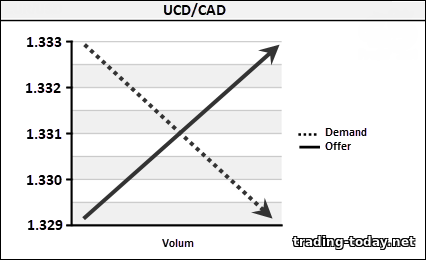
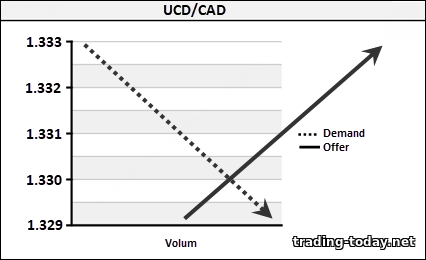
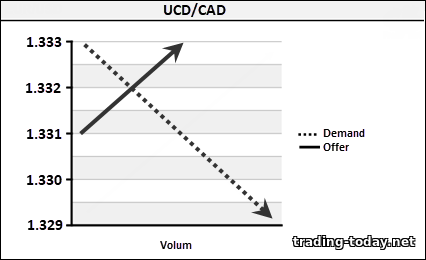
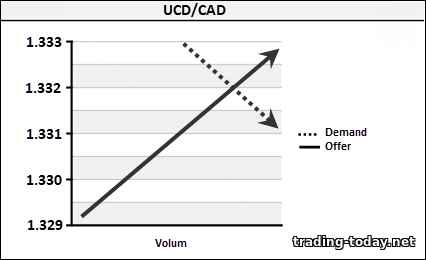
The price of all global assets in the Forex market depends on the indicators of supply and demand. The world community decides what the exchange rate will be for certain currencies belonging to different countries. Simply put, the international community is capable of both crushing the economies of strong countries that have their own currencies and strengthening these economies.
Of course, such changes cannot be spontaneous - everything depends on the country itself (the owner of the currency) and on the political decisions of its leaders. The outbreak of war, the closure of borders, man-made disasters, etc. can greatly reduce the demand for currency, and therefore very sharply reduce its price on the world market. This situation has been observed in Russia since 2014 - there was a sharp drop in the ruble against world currencies.
At the same time, if a country uses its natural resources wisely, invests huge amounts of money in technology development, etc., then demand will grow. A striking example is the United Arab Emirates (UAE). The country has become one of the main oil exporters, thereby the exchange rate of the dirham (the national currency in the UAE) has increased in relation to world currencies. This led to the strengthening of the country's economy.
Trading support level
Support level (demand level) is always below the current price. It “supports” the price and prevents it from falling lower than the current value. The level itself is very easy to identify on the chart - this is a price level that the price repeatedly cannot break through: Any support level is tied to a price value. It is the price of the asset that causes demand to rise or fall. At support levels, the fall is stopped first, because supply equals demand, and then the price completely turns upward, because... There are a lot of buyers (bulls) appearing on the market who want to “take the cream” from such an attractive price. Demand increases and the price begins to rise.It is important to note that support levels are not formed “in the wild”; as a rule, their formation was influenced by previous trading experience - this is not the first time that the current price is attractive to buyers. There may also be moments when the price reaches the “bottom” for the first time in its history and forms new support levels - often such levels are formed at “round price levels", which we will talk about later.
Resistance level in trading
The resistance level (also known as the supply level) is formed exclusively above the current price. As the name suggests, a resistance level prevents the price from rising even higher than the current value. From these levels we should expect sharp sales of the asset, and therefore a fall in price: If we talk about the mechanics of these levels, then they, like support levels, are formed on the historical values of the chart (at local maximums) and are tied to the price of the asset. Sellers are in a hurry to sell the asset at the maximum price - this leads to an increase in supply, and therefore to a decrease in the price of the asset.If at support levels many bulls enter the market, then at resistance levels the bulls leave the market and bears come to power. The more bears entered the market, the stronger the pullback from this level will be.
You can also observe situations when the price reverses without reaching resistance (or support) levels - this is caused by the banal greed of market participants: everyone wants to buy a little earlier and sell as quickly as possible. This is not profitable, but the fear of losing what they have, multiplied by greed, forces traders to act this way.
The psychology of support and resistance levels: why support and resistance levels work and push back the price
I think everyone who has encountered support and resistance levels has asked the same question - “Why do these levels work and push back the price?” It's funny that there is a circle of people who flatly do not recognize support and resistance levels, indicators, candlestick patterns, etc., arguing this with their distrust. These people partially (or completely) fall into the category “binary options are a scam for suckers!”, and the fact that they actually make money from this does not concern them (a scam, period!).But let's return to the levels of supply and demand. As we already found out earlier, the greater the demand for a product, the higher its price. At some point, traders realize that they should not expect further growth in the price of the asset - the power of buyers has decreased and the trend has slowed down significantly. It's time to make a profit from the situation - sell at the best price. Moreover, the closer the price is to previous highs, the more it inspires confidence among sellers.
In simple words: sellers look at past price readings (price movements, highs, rollbacks) - it is important for them to determine the zone from which it is most profitable to sell an asset, so as not to exit the market earlier (receive less profit) or later (lose part of the profit). The more accurately they determine the level where the bulk of sellers will begin the sales phase, the more profit they will receive.
On the graph it will look like this: The higher the price rises, the more sellers pay attention to it. At some moments, the price reaches previous highs and the implementation phase begins (rollback or trend reversal). All bears want to sell the asset at a higher price and as quickly as possible, thereby pushing the price away from the resistance level.
If we talk about support levels (aka demand levels), then the situation is completely opposite. The lower the price falls, the more attractive it is for buyers (bulls) - remember the rule “buy low, sell high!” At some moments, the price will drop to critical moments - when it will not be profitable to sell the asset, but it’s time to buy. A huge number of bulls appear on the market and begin to drive the price up. Briefly speaking about this situation:
- There is a constant struggle between buyers and sellers in the market
- At the moment when there are more buyers than sellers, a support level is formed on the chart
- At the moment when there are more sellers than buyers, a resistance level is formed in the market
Okay, we’ve figured out the formation of support and resistance levels, but why do they work and push back the price? It's all about the psychology of market participants and the psychology of the market as a whole.
Surely, each of you has been burned by a match at least once in your life. What experience have you learned from this whole situation? Most likely, you shouldn’t play with a match and you need to be careful, otherwise you’ll have to feel the pain from the burn all over again. In trading, the market itself is exactly the same as a match that can burn if used without special care.
What is caution in the market? This is the ability to correctly identify the most likely price movements and move in the same direction as the price is moving. It is impossible to control the market, but moving with it is quite possible.
So, every experienced trader understands perfectly well that the price cannot move forever in one direction - somewhere there will be a rollback, somewhere there will be a reversal, and somewhere the price will mark time. But when will this happen? When should you enter and exit the market? The answer is painfully simple - when the “crowd” agrees on one opinion. It is the “crowd” (collective decision) that pushes prices up, down, sideways, and we must be part of this crowd.
It is important to always be among the predominant force: there are more bulls in the market - we buy an asset with them; There are more bears on the market - we sell along with them. But there are also turning points - when the bulls suddenly abruptly leave, and the bears unconditionally take the initiative into their own hands and vice versa. What then?
For this purpose, there is a simple and understandable tool for everyone - support and resistance levels. On a chart, they look like regular lines, but these lines point the trader to areas of the chart where the further direction of the price (up or down) is likely to be contested.
If the price approaches maximum price values (even local maximums or minimums), then many market participants understand that the struggle between bulls and bears will now intensify, and which of them will be stronger is not always obvious. If you analyze all the actions, they will look like this:
- The price goes up and market participants see that a little higher there is an area of interest for the bears - some buyers will leave the market for fear of losing profits. The price will roll back down. If a small number of bulls exit the market, the trend will gain new strength and continue until the next zone of interest for the bears. And so on until the number of sellers outweighs buyers and reverses the trend.
- If the price goes down, then conflicts will arise at support levels (buyer interest levels) - at such levels some bears will exit the market. The price will roll back up. If there are still more sellers in the market, the downtrend will continue until the bears leave the market or give way to the bulls.
- If there is only one opinion on the market (there are only bulls or only bears - this happens during news releases), then there will be no competition, which means areas of interest will be temporarily absent - the price will not notice support and resistance levels, i.e. To. they faded into the background.
Traders themselves attach weight to price values - they look at the history of an asset and expect that the situation will repeat itself now. One trader thinks so, another trader thinks so, tens, hundreds, thousands of traders think so - together they sum up their strength and reverse the price by buying or selling an asset.
This makes us understand one simple thing: if the price has already formed several highs or lows at the same price level, then there is a high probability that the situation will repeat itself now, because most traders think exactly the same way. Everyone uses the same chart, everyone sees the same data, everyone understands perfectly well that they need to move with the crowd - everyone becomes part of the crowd.
Let's look at the situation with the bulls (buyers): We see a downward trend. At some point, the price began to interest the bulls - they considered this price the most profitable for purchasing an asset, thereby increasing demand and raising the price. The bears resisted with energy, because... We didn’t expect such a strong influx of buyers and a little later we realized that the fight was pointless - we needed to get out of the market before it was too late.
An upward trend has begun. The price pullback occurred at the previous local maximum - the bears believed that they could seize the initiative (they succeeded for a while), but later the bulls believed in their strength and increased their pressure - the trend continued. The value is 1.10900 - this is not visible in the screenshot, but this is also the level of interest of bulls and bears in the past. This is where all the bears concentrated.
The smarter of the bulls exited immediately upon reaching the level, while the slower comrades left the market on the second attempt to break through the bears’ zone of interest. As a result, only bears remained in the market - the price flew down. At the previous high, a bull movement was organized a couple of times, which quickly fizzled out. At some point, buyers realized their hopelessness and did not interfere with sellers - the price fell to the previous low on this chart.
By this point, there were significantly more bears - they were deciding how much the price would fall. The bulls were only able to hold them for a short time at the previous low, but then simply left the market so as not to lose money in vain. This is understandable - it is stupid to try to stop a train by standing on the tracks. As a result, the previous minimum was broken, since there were simply no buyers in the market in the required volume.
If we look at this chart further, we see a continuation of the downward trend – the bears were very strong. No matter how hard the bulls tried, they could not do anything in local confrontations. This continued until the bears weakened, and there were significantly more bulls in the market: Each pullback against the trend price movement formed at the same levels. Where buyers tried to stop sellers, sellers later tried to stop buyers. Each price level highlighted means nothing unless the crowd gives it meaning. Every time a group of enthusiasts tries to understand whether the price will now reverse or not - they enter the market with the hope that the crowd will support them. The result is a price rollback or a trend reversal.
But for us, it is much more important to understand that the overwhelming majority of support and resistance levels are of interest to market participants. If we trade binary options, then even a small pullback is enough for us to make money. This means that by setting very noticeable levels of interest, we can quite accurately determine the moments of price reversal - making money both with the trend and against it.
Sellers and buyers in financial markets (who makes support and resistance levels work?)
There is a lot of information about bulls, bears, buyers, sellers... What does this have to do with support and resistance levels?! support and resistance levels are just a tool that is put into action by sellers and buyers (bulls and bears).Everything is tied to the psychology of market participants - they are afraid that the price will not fall lower or rise higher if their strength weakens. They are also driven by greed, if they are in the majority - all doors are open, just continue. But where do these “buyers” and “sellers” come from?
Here it is worth remembering why people come to the market - to earn money (for benefits)! What is profitable right now? Trade in the same direction as the vast majority trades. But the crowd can move the price both up and down, and buyers only benefit from uptrends, while sellers only benefit from downtrends. Something doesn't add up...
The fact is that “buyers” and “sellers,” just like “bulls” or “bears,” are generalized names for those traders who are currently moving the price up or down. If it is profitable for the trader, he will join the bulls and stay with them until the trend ends. As soon as this happens, the former bull joins the bears and begins to realize the accumulated profit with them.
And so on ad infinitum. Traders constantly take sides for their own benefit and immediately change sides if conditions change. Therefore, there can be only bulls or only bears in the market.
How a support level turns into resistance and how a resistance level becomes support
It's funny, but the price level that is interesting to market participants can be both support and resistance. The only difference is which side of this level the price is on.Let's understand how a support level becomes a resistance level:
- Bears that did not manage to open immediately after the breakdown of the support level (breakdown downwards), begin to open trades on a price rollback - as a rule, this is a previously broken support level (they enter at the very beginning of the price movement and at a favorable price, because there is no certainty that the price will go even higher).
- Traders who opened at the very bottom of the movement average at the broken support level
- Bulls who opened trades upward from the support level (when the level had not yet been broken) had the opportunity to close without losses and exit the market
If we talk about the situation when the resistance level turns into support, then everything is exactly the opposite:
- Bulls who did not have time to enter the market immediately after the breakdown of the resistance level (breakout upward) enter the market during a price rollback - as a rule, this is a previously broken resistance level.
- Buyers who entered at the very peak (before the start of the pullback) average their positions at a more favorable price
- Bears leave the market without losses, waiting for the price to return to the level that was previously resistance
Correct construction of support and resistance levels
Support and resistance levels are one of the most important tools for predicting price movements. Zones of interest allow you to understand the situation on the market on any time frame - from M1 to the monthly chart. It is worth understanding that many levels will work for years, but the older the time frame of the chart, the more significant the levels on it.Your task, as a trader, is to learn how to correctly set and use supply and demand levels. This skill will make it much easier to find the right points for opening trades.
Horizontal lines of support and resistance
Finding support and resistance levels is not difficult - we need to find at least two points with the same price value where the price reversed. Moreover, it does not matter where exactly it turned, the main thing is that there are two minimums or maximums at one horizontal level. The more turning points there are at one level, the more attractive it is for market participants - the stronger the level.Levels constructed from only two points, constantly broken through by the price, are weak support and resistance levels - it is better not to count on such horizontal lines in your trading. Red circles mark moments when the price practically did not react to the support and resistance level - do not forget that sometimes the levels will be broken through without pullbacks!
Now let’s figure out how to correctly set support and resistance levels on price charts. Let us remember that the price has memory, which means that the levels can work for years or even tens of years. The first thing we need is to set the levels on the highest time frame. Let's switch to the monthly time frame, rewind the chart as far as possible to the left, and set all visible levels, and also mark the maximum and minimum price values - these are also strong support and resistance levels. It is advisable to make these levels bold and choose a separate color for them (I have red). The next step is to go to the weekly timeframe and set all the levels there. It is advisable to set the horizontal lines your own color and reduce the thickness: We repeat the steps for all lower time frames. The lines of each TF are given their own color. Also, if necessary, we more accurately align the levels drawn earlier.
If you set all levels on all time frames and go to the minute chart, you will see a similar picture: Please note that the levels that are set on higher time frames work on lower time frames. Here it is worth understanding that the situation works unilaterally: levels set on older TFs will work on junior TFs, but levels from lower time frames will not be suitable for older time periods.
It is also worth understanding that any support and resistance levels are only our view of the current state of the market. This means that traders may have different opinions: some levels will perform well, while others will perform poorly, because they were simply not noticed by the majority of traders or the levels were not of interest to market participants at the moment.
How to correctly plot support and resistance levels on a price chart
In trading there are no 100% trading strategies and there are no 100% methods for plotting support and resistance levels on a price chart. Some people see the level in one place, others several points higher or lower, and some do not see the level at all. Who is right in this situation?! Traders make mistakes all the time (trading is impossible without losing trades), but there is always an opportunity to reduce mistakes to a minimum.First of all, a trader must learn from his own experience how to set support and resistance levels. If you didn’t have such knowledge initially, then watch the professionals and repeat the same steps. Also regularly set support and resistance levels on the charts - the more often you do this, the faster you can hone this simple action to automaticity. Professional traders are able to find support and resistance levels in fractions of seconds and do not always need to visualize these levels as a horizontal line on the chart - this is what you should strive for.
Also, don’t forget about risk management and money management - they will help save your money in those moments when you you will be wrong. For everything else, you need practice, practice and more practice!
Contact zones: zones of price contact with support and resistance levels
While reading this article, you may have noticed some nuances in the alignment of support and resistance levels on the price chart - somewhere the levels are built along the shadows of candles, and somewhere along the bodies. Which of these options will be correct?In fact, the body and shadow of a candle directly depend on the time frame of this candle - the older the time frame, the more candles of the lower TF our candle includes. Based on this data, we have the opportunity to “adjust” the length of the shadow and body of the candle by changing the time frame of the chart. But the support and resistance levels have not gone away and are still in place...
As you already know, the level of supply and demand is drawn through at least two points on the chart, indicating price reversals. It will not be possible to set the level accurately enough using two points, but what if there are 4 or 7 such points? In such a situation, the level will be visible very clearly and there will be no doubts.
And here you will already notice one simple truth - it doesn’t matter at all how exactly the level was built (by the body of the candle or by its shadow), it is important that you found the line from which the price bounces, and the shadows of the candle only indicate the strength of the rollback, to Moreover, the candle model directly depends on the closing time. For example, the “Pinocchio” candlestick formation and the “Absorption” formation are the same thing, the only difference is how many candles the pattern consists of. Once again: if there are only two points for constructing the support and resistance level, then we set the level “approximately” and adjust it as information becomes available. If there are enough points to accurately plot levels, then we draw this line, not paying attention to the candles and their shadows - it is important for us to determine the level of a possible price reversal, and not to show off our artistic talents. Let's analyze our example to the end: if we take the segment of the chart that we looked at earlier, then it is better to set the upper level along the body of the candle - we will get a line from which the price very often reversed. The lower level should be set according to the shadow of the candle - the main reversals occur on this line.
The bottom line: we must always act according to the situation. The more often the price reacts to a certain level, the stronger this level is, so try to build support and resistance lines at more points of contact.
Dynamic supply and demand lines or trend lines of support and resistance
Dynamic or trend lines of support and resistance are lines that indicate the price channel during trends. They are not tied to price levels and, in my opinion, have less power. But they still exist and in some situations they can significantly simplify the process of technical analysis.What are trend lines? These are sloping lines passing through the tops and bottoms of trend movements. By plotting them on the chart, the trader understands in which channel the price is moving.
Typically, the most important trend lines are support lines for an uptrend and resistance lines for a downtrend. The breakdown of such lines allows us to determine the weakening of the trend, which means a possible price reversal in the near future.
The trend line is drawn from the first two peaks or troughs of the trend. If the trend moves far from the support level or resistance level, then additional lines are drawn on the chart: Trend lines that work best are those that are confirmed by horizontal support and resistance levels. If a pullback during a trend has reached both the trend line and the horizontal level, then this is a good point to enter along the trend. Also, do not forget that trend lines can change their properties and after breaking through support (for example), it becomes resistance: If you use trend lines in your trading, then you should open trades only in the direction of the current price movement.
Support and resistance zones - supply and demand zones
There are professional traders who believe that there are no support or resistance levels! And you know, they are absolutely right. The level is needed to quickly indicate a possible price reversal point on the chart, but if you look at the chart, the price does not always reverse after reaching a specific price level - sometimes the reversal occurs later, and sometimes the price even reverses earlier. Why is this so?The answer is simple: in the market, each trader sees levels differently:
- Someone drew a level higher than yours and opened a trade from it
- Someone, like you, has drawn a level - he will enter the market from it
- Someone saw the support and resistance level lower than you set it - this is the data for opening a position for this particular trader
How to determine the support and resistance zone? First of all, you need to find the level of support and resistance, and then identify the upper and lower boundaries of the zone. Zones come in different sizes, but it is not difficult to determine them - you just need to look at the candles, near the set level and using the shadows of the candle to find the points where the price most often reversed - these will be the boundaries of the support and resistance zone: At the borders of the support and resistance zone, candles with shadows are very often formed - they very well indicate the boundaries of the support and resistance zone. The formation of various candlestick formations that predict a price reversal is also great. In trend movements, the presence of a zone is indicated by tops and bottoms.
It is also worth remembering that zones, like supply and demand levels, can be both support and resistance - it all depends on the location of the price in relation to the support and resistance zone. The asset price will react to the support and resistance zone as follows:
- Being outside the zone, he will push away from the boundaries of the zone, not wanting to enter it
- Being inside the zone, it will push away from the borders of the zone towards the center, not wanting to leave the zone
Round numbers and key price levels of support and resistance
Key price levels or round price levels levels are a strong magnet for market participants. Simply put, such levels have special power.Round price levels include levels ending in:
- **00
- **20
- **50
- **80
The **20 and **80 levels are slightly less powerful than the **00 and **50 levels, but still perform very well in trading. The round levels themselves should be considered as zones of support and resistance.
For example, in the “Strong Level” strategy, built on round price levels, the zones have a fixed width of 10 points on the M15 TF. Approximate placement of zones around the levels is allowed:
Price channel – dynamic support and resistance zone
A price channel or dynamic support/resistance zone is a channel built along tops and bottoms. It lines up both during a trend and during sideways movements: In general, this method of determining dynamic levels of supply and demand is no different from support and resistance lines, which are usually used in trend price movements.Mirror support levels and resistance – rollback to the broken level
It is not uncommon for the price, during trend movements, to break through the support and resistance level and then return to it. A clear example of wave-like price movement is shown in the picture below: As we see, the price very often returns to the broken level and from there continues its movement towards the breakout. This knowledge is needed to understand price movements and find entry points - if you missed a breakout of a level, then you should not enter the market right away, it’s better to wait for a rollback to the broken level and then open a deal from there.It is also worth paying attention to the sections of the chart between the supply and demand levels - the price between them changes very quickly and moves almost without stopping in the direction of the trend. This is explained by the fact that all market participants are participants in the current movement or are waiting for the price to approach interest levels in order to try to stop or reverse it.
Breakout of the supply and demand level and a rollback to it - how to correctly use the price return to the broken level
As mentioned earlier, very often you can observe a situation when the price, having broken through the support and resistance level, moves for some time towards the breakdown, but then returns to the broken level in order to consolidate on it. Since the situation is not rare, it can and should be correctly understood and used in your trading.Let's look at an example: a downtrend, during which a support level was broken, which later became a resistance level: Let’s assume that we saw this level in advance (on the history of the asset’s price chart) and understood perfectly well that the price would react to the area of interest. Our first trade will be from the support level - when the price first approached this level from above (the trade, accordingly, will be opened upward).
The second point that interests us is the second touch of the level. Since the trend is downward, we should expect slight resistance from the bulls or a breakdown of the level. We can only determine a level breakdown based on fact (we’ll talk about this below), so there are only three options:
- We are trying again to open a trade to increase from the support level, with the hope that the price will turn up for the second time
- We wait for events to develop - we do nothing (if in doubt, then it’s better to do so)
- Put a pending trade down on the breakout of the level (beyond the lower border of the support and resistance zone of this level)
- Greedy market participants enter down to try to grab at least some piece of the price movement (a very stupid action)
- The price moves to the next level of interest, at which the bulls take revenge and turn the market up
- Buyers who opened bullish trades at the support level leave the market (with the expectation that the price will not break through the level) - they close at breakeven and are glad that everything worked out well
- Bears who did not have time to enter the level breakout are entering the market
- Sellers who entered the trade significantly lower average their positions so that they have the opportunity to get double profits
And so, we missed the breakout of the level - we do nothing, but simply wait for events to develop. The price has reached the next level of interest - we can open a trade for an increase (in this case, this would bring profit). The price rolled back to the broken support level and became resistance - we open a downward trade with the bears (the most profitable point to enter the market). With an upward trend, everything is exactly the opposite.
Conclusion: after breaking the level, you should expect the price to return to the broken zone to consolidate - this is a less risky way to open a trade in the direction of the trend. This way you will trade with the crowd, and in most cases, you will make money!
Main mistakes traders make when working with support and resistance zones
No matter how strange it may sound, traders very often make the same mistakes - they open bullish trades when the price has approached the resistance level; open down trades when the price has almost reached the support level.Both cases indicate to us that the price will reverse with a high probability - there is no point in talking about any continuation of the trend! There are, of course, cases when the price breaks through levels without stopping, but this does not happen often - in the overwhelming majority, traders will suffer losses: If there is an upward trend, then we open trades:
- Down: on a rollback from the resistance level
- Up: at the moment when the price returned to the broken resistance level, which became support
- Up: on a rollback from the support level
- Up: at the moment when the price returned to the broken support level, which became resistance
How to identify a false breakout and how to trade a breakdown of support and resistance levels
For many traders (even experienced ones), it remains a mystery how to determine a false breakout of support and resistance levels, and when we can consider that a breakout of the level has taken place. To analyze this topic, we immediately remember that there are no levels of supply and demand - there are ZONES of interest.Some believe that a breakout of a level can only be determined at the moment when the price has returned to consolidate at this level. In practice, a level breakdown can be determined earlier. First, let's figure out what is a false breakout of the level.
A false breakout of a support/resistance level is a short-term price stay behind the level and a further price reversal from this level. Usually false breakouts are indicated only by shadows. Sometimes reversal patterns are formed, for example “Absorption”.
There are some difficulties associated with this: the shadow of a candle immediately indicates a false breakout, but “absorption” is a formation of two candles and it’s already 50/50. The essence of the definition of a false breakout is as follows:
- On the chart we highlight the support and resistance zone of the level of interest
- If the candles close within this zone or a rollback occurs, then the zone has not been broken and this is a false breakout
- If the candles close behind the support and resistance zone, then there is a possibility that the zone is broken: you should place a pending trade in the direction of the trend or wait for another candle to form - if it also closes outside the broken zone, then with a high probability the breakout is confirmed
To correctly identify a false breakout, you should have a good knowledge of reversal candlestick formations and Price Action reversal patterns - this will allow you to more quickly determine the probability of a price breakout. Also, don’t forget about trend continuation models - they will help you identify a breakout of the level earlier and take the necessary measures.
What to look for in support and resistance levels - the strength of supply and demand zones
It's time to talk about the distinctive features of support and resistance levels and zones. There are some aspects that you should pay attention to when working with this technical analysis tool.Number of touches of the support and resistance zone
As you have already read above, the greater the number of times the price touches a zone, the more interesting it is for market participants. It is worth noting that you need to take into account only those touches that led to a weakening of the movement, a price rollback or a reversal. If the price breaks through the zone and does not stop, then this is not “contact with the zone.”Also of particular importance is the touching of one zone at the same time as support and resistance (one zone that serves as both support and resistance after a breakdown). Such zones are quite strong.
Support and resistance levels can be used on all time frames
Many people mistakenly believe that support and resistance zones can only be used on higher time frames - this is not true! Supply and demand levels work on any time frame – from M1 and higher.But do not forget that levels set on higher time frames will work well on junior TFs, but levels, for example, on M1 are unlikely to be suitable for a fifteen-minute chart.
Touch zones are valuable with support and resistance levels
The trader should pay attention to the chart zones in which the price has reached the support and resistance level - more precisely, to the price reaction that has reached the supply and demand zone.If the price immediately jumped away from the level, then this is a good sign - the level is interesting to market participants and has great power: If the zone is not very interesting to traders, then the rollback from it will be small - the candles will be small and with shadows in both directions:
Trend slope
The more a trend is inclined in the vertical direction, the stronger it is. If the trend moves almost horizontally, then this indicates the weakness of the trend.The speed of its reversal depends on the strength of the trend - trends with strong movement end faster than slow “sideways” trends:
Levels and zones of support and resistance in technical analysis figures
All technical analysis models are based on support and resistance levels. The technical analysis models themselves are visualizations superimposed on top of the price chart - this is necessary for a faster and easier understanding of the market. Anything that simplifies our trading process is good!Let's look at several technical analysis figures. The first one will be the “Head and Shoulders” figure: Most often, this model consists of a supply and demand zone, into which the price rests - three peaks are formed, which symbolize a trend reversal. The trend line not only indicates a possible entry point into the market, but also confirms a reversal.
Technical analysis figure “Two Tops”: The price hits a strong level, after which a rollback occurs to the previously broken support and resistance level. The final stage of model formation is the second attempt to break through a strong level.
Triangle figure: The price hits the resistance level (for an uptrend) and is supported by the support line.
Any other technical analysis models work similarly: it all comes down to the use of levels, zones, support and resistance lines.
The best indicators for building support and resistance levels on the price chart
For the lazy (and not only) there are a lot of indicators that will facilitate technical analysis. I advise you to familiarize yourself with the following indicators:- Auto Trend Channel - indicator for building a price channel on the chart of the MT4 terminal
- LEV 00 - indicator for MT4, building zones around round price levels (use on TF M15!)
- SR PRO (TLB OC) - the best indicator of horizontal support and resistance levels for MT4. Can build levels from different time frames and according to a certain number of turning points
Support and resistance: summary
Let's summarize this article:- Support and resistance are a powerful and important tool for technical chart analysis
- Support and resistance zones reflect the strength of supply and demand in the market
- The strength of a particular support and resistance level can be determined by paying attention to indirect signs
- Demand and supply levels and zones work on all time frames
- You need to be careful to identify a level breakout and distinguish it from a false breakout
- support and resistance levels have their own trading rules
- Demand and supply zones are the basis of all market price movement
- One level can serve as both support and resistance
On the other hand, trading based on support and resistance levels requires practice - the more you do, the better you will understand the market, which means there will be many fewer mistakes!

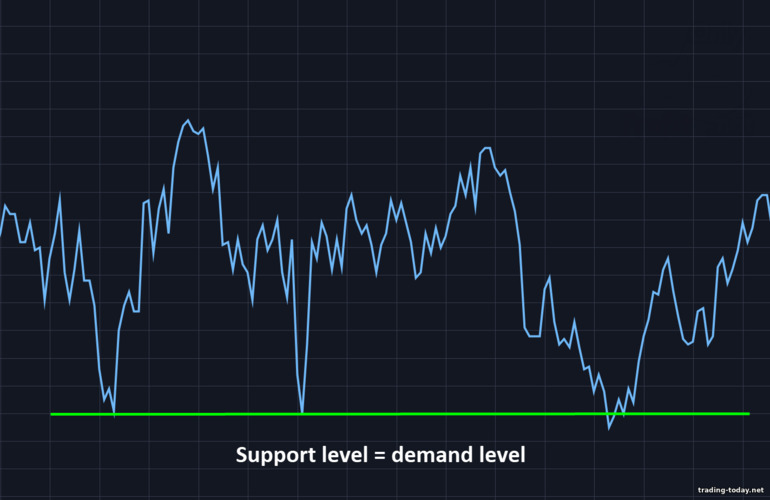
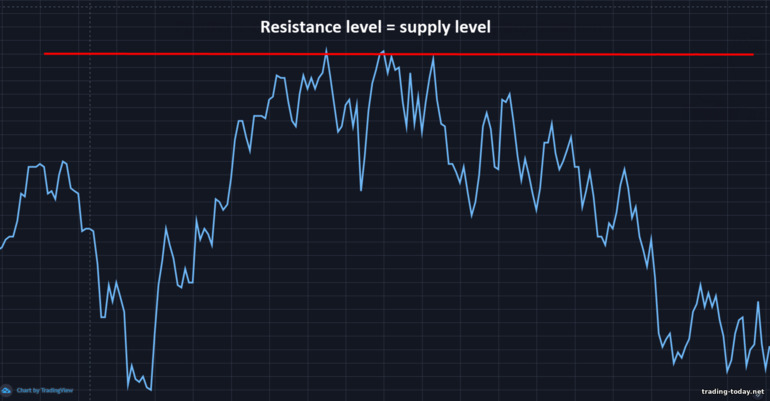
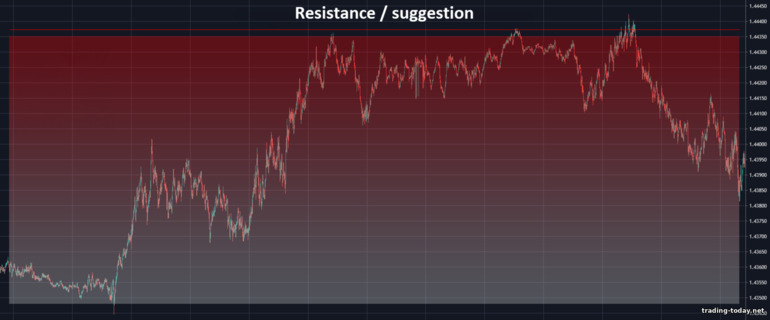
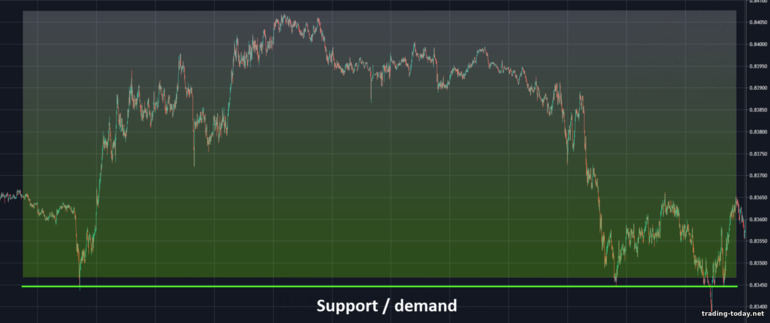
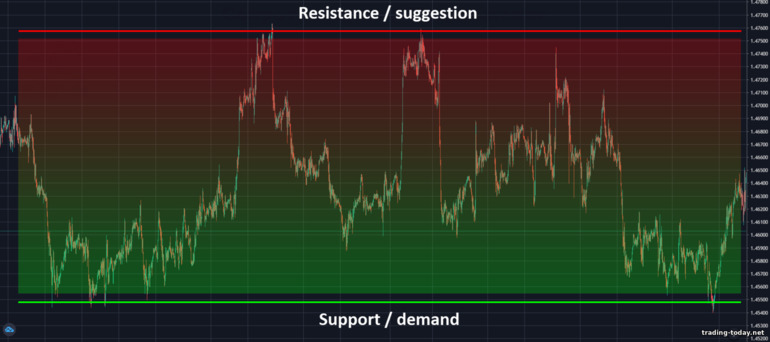
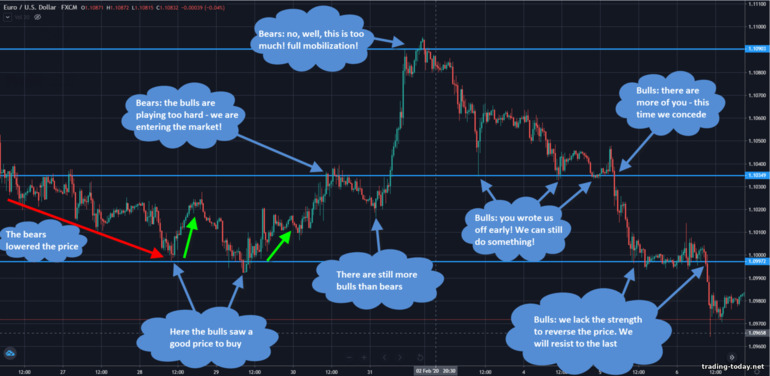
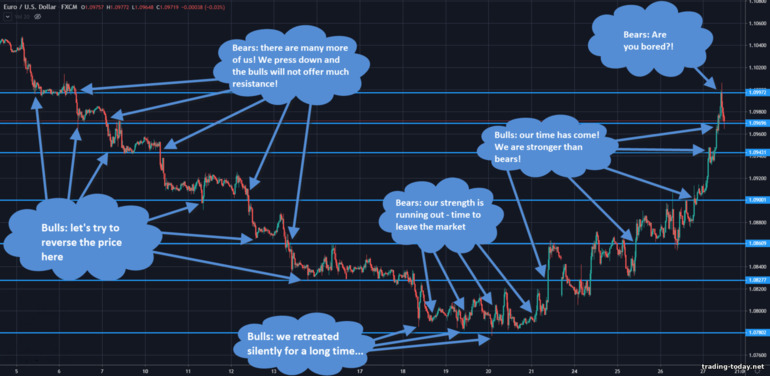
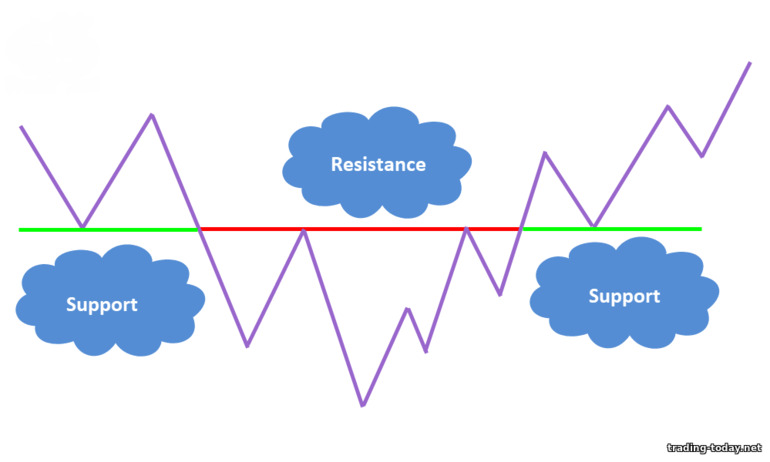
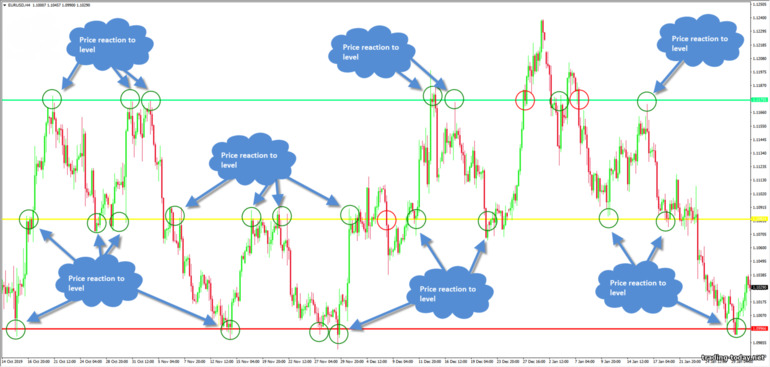
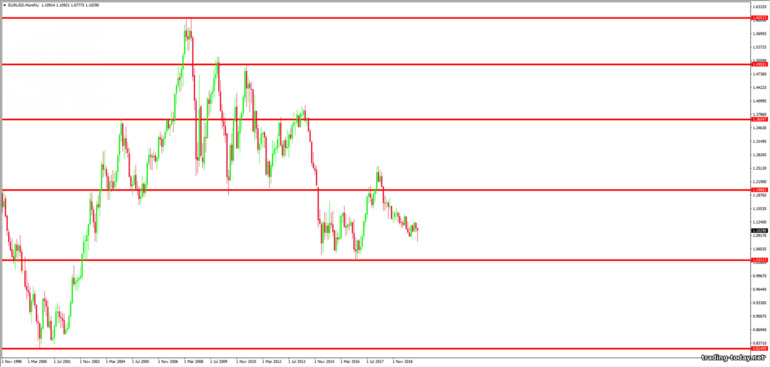
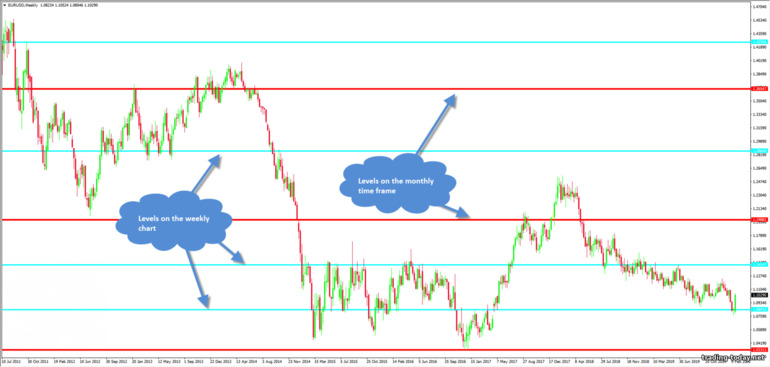
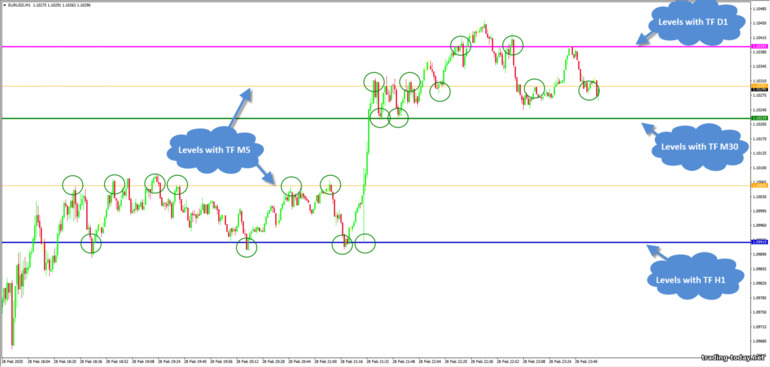
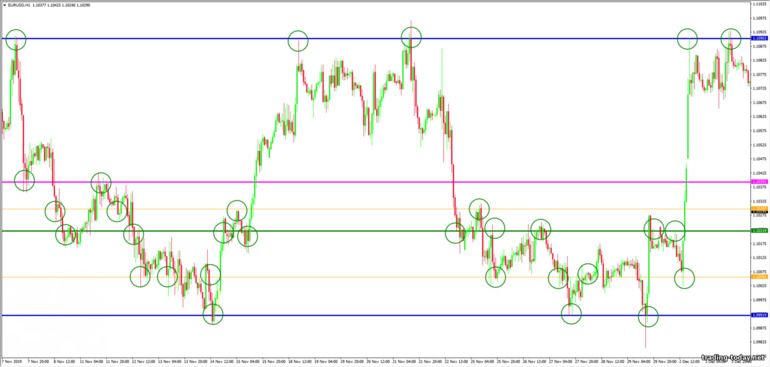
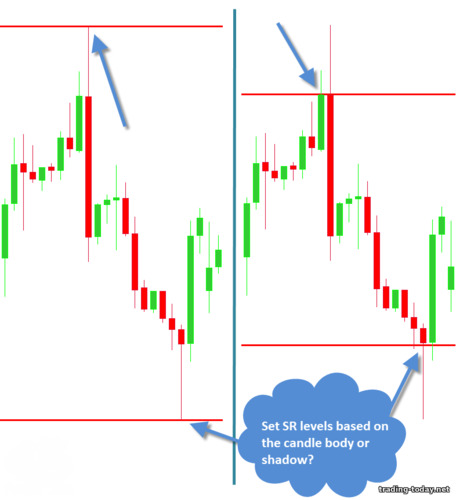
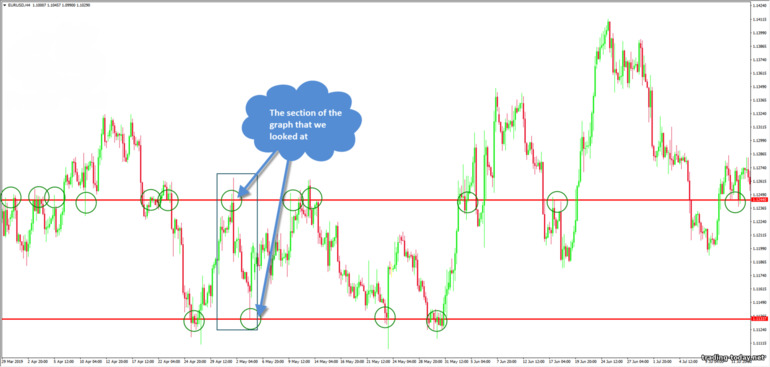
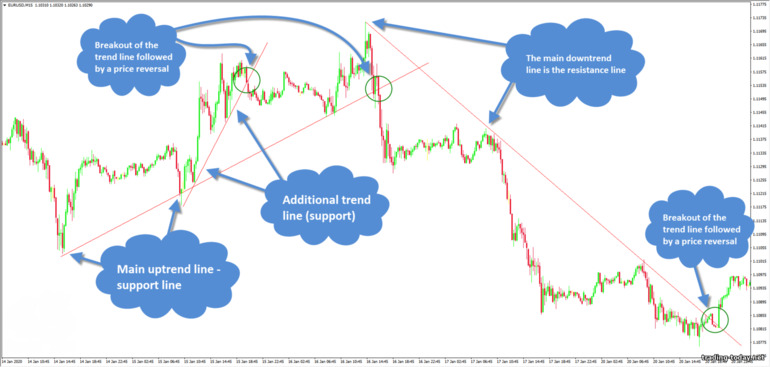
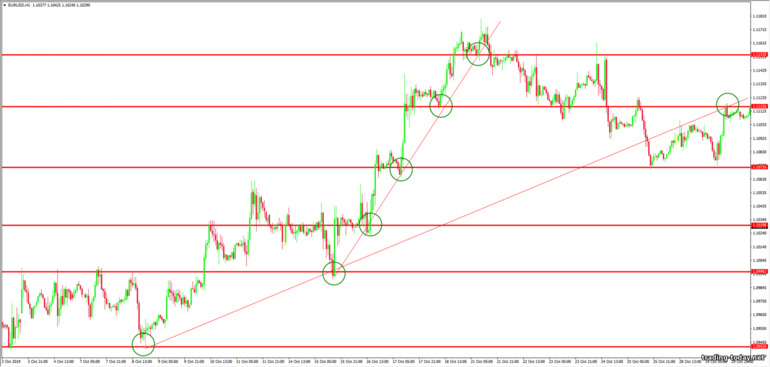

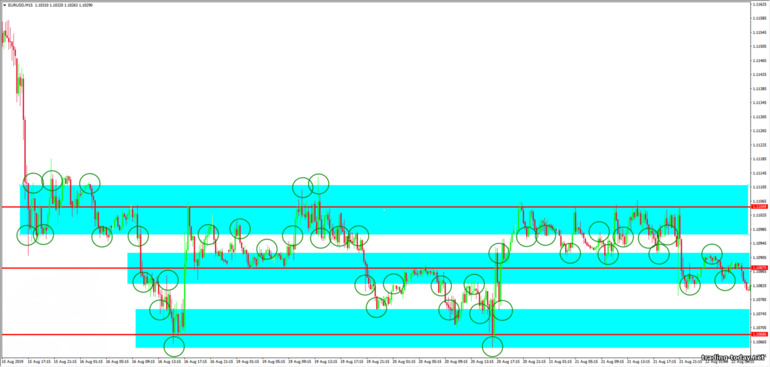
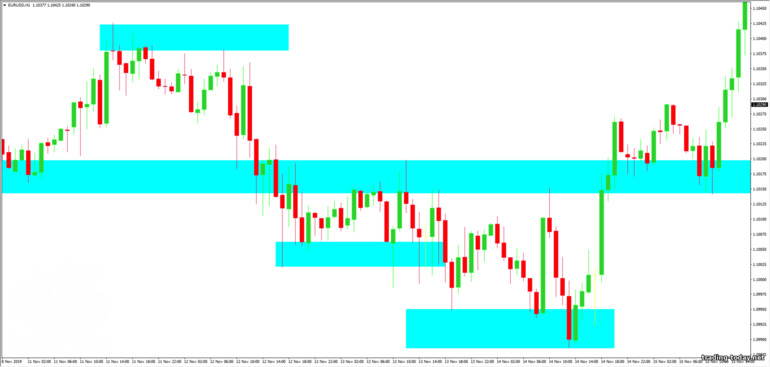
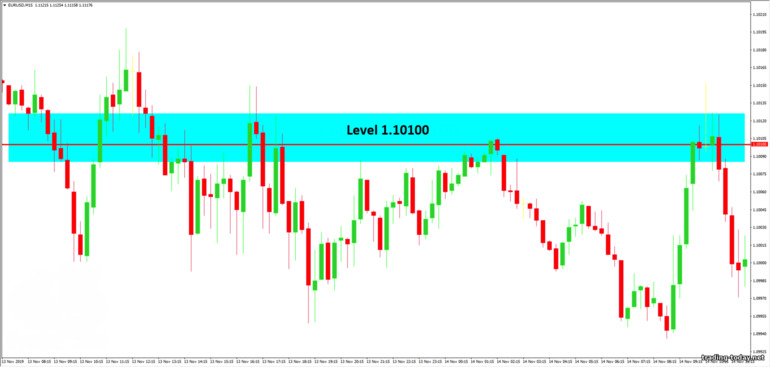
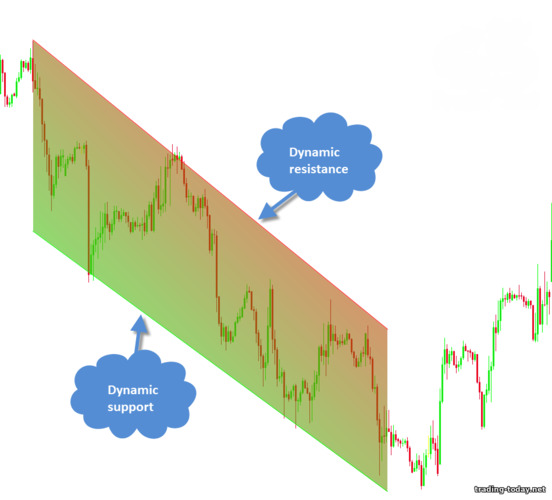
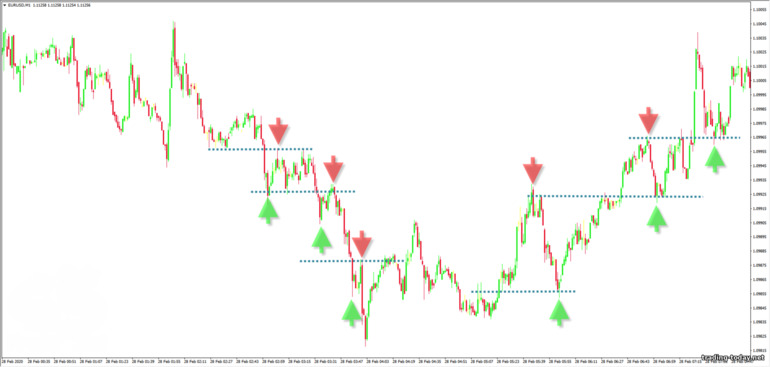
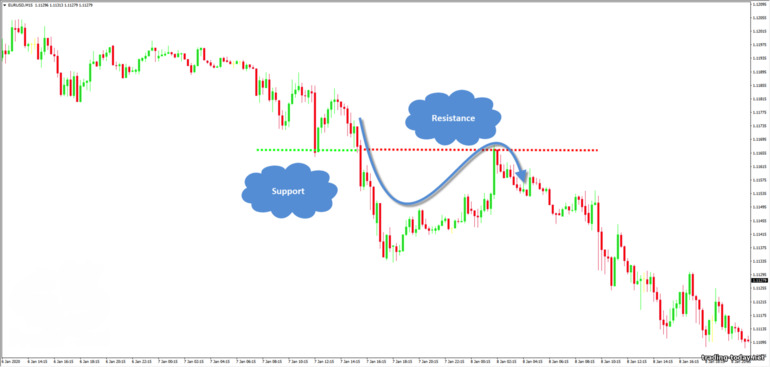
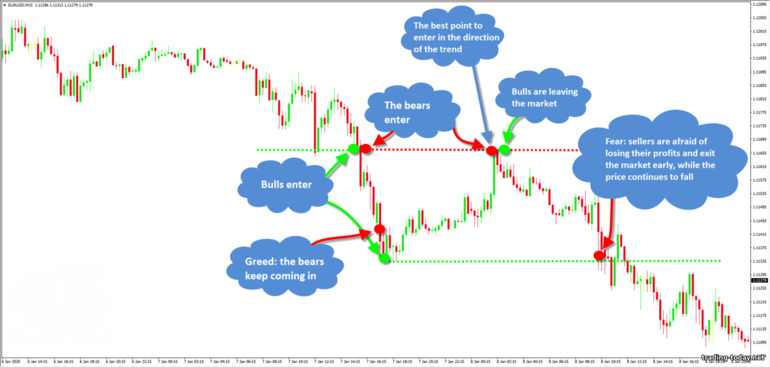
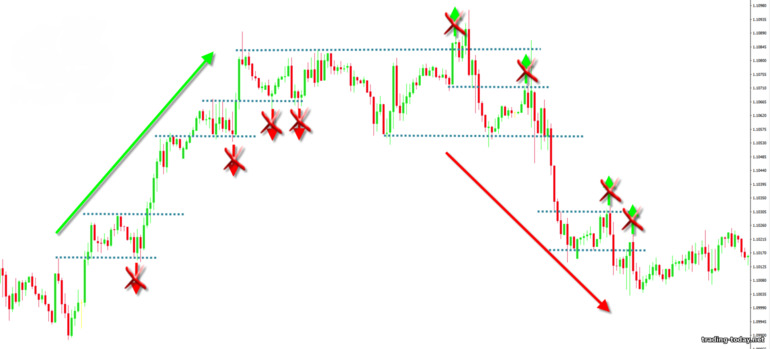
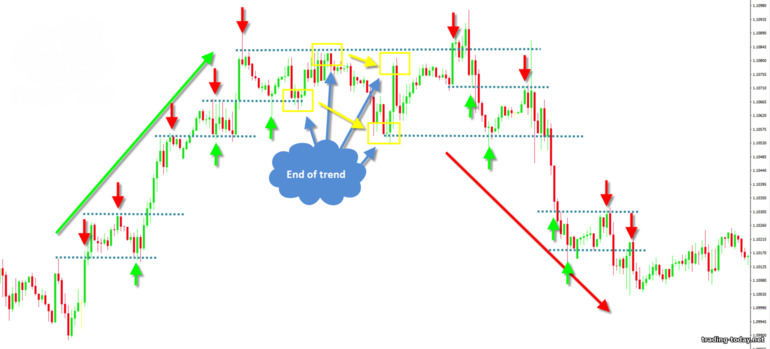
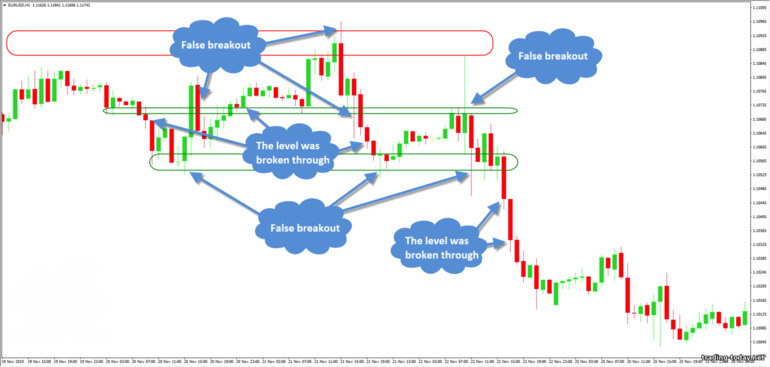
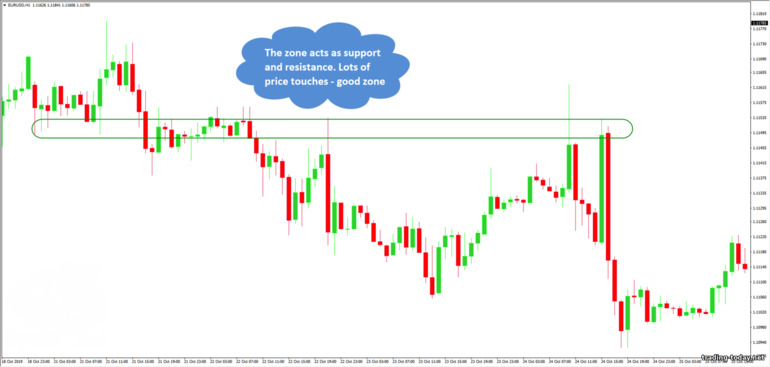
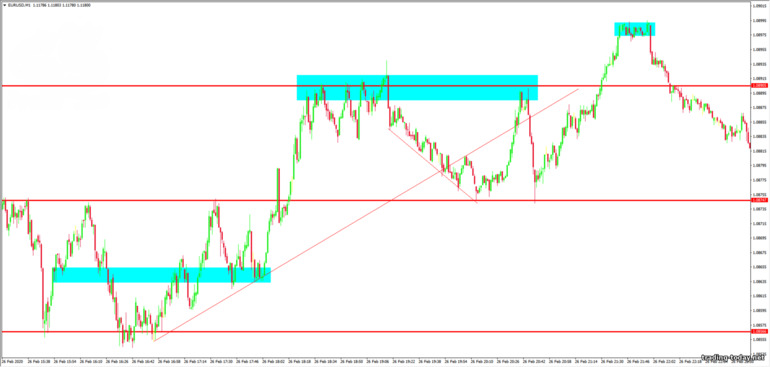
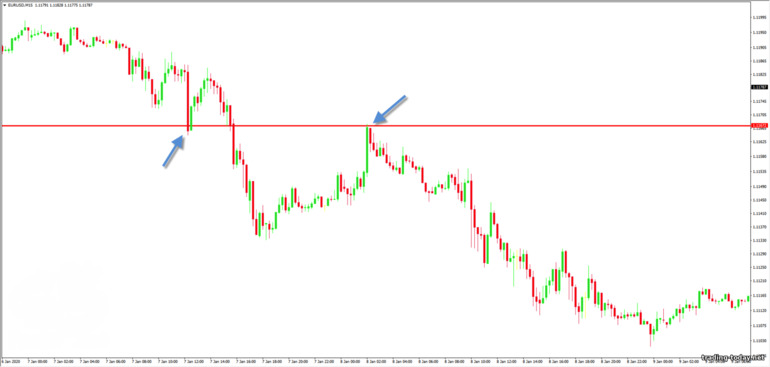

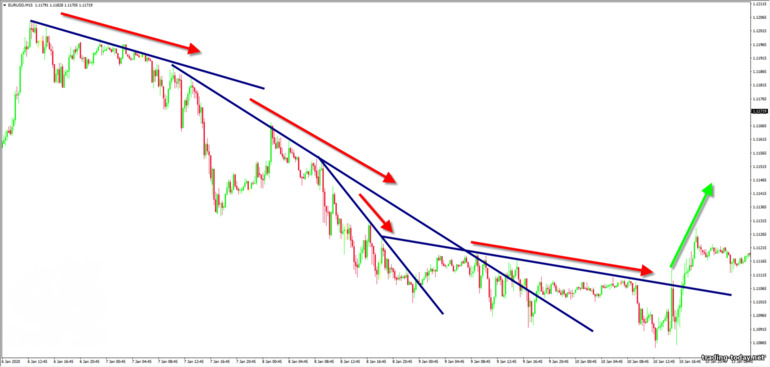
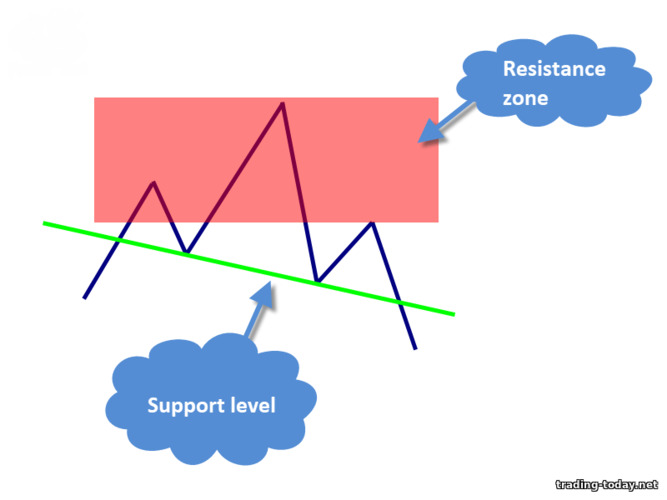
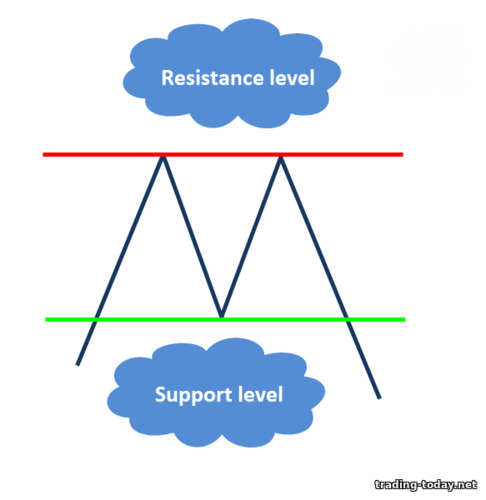
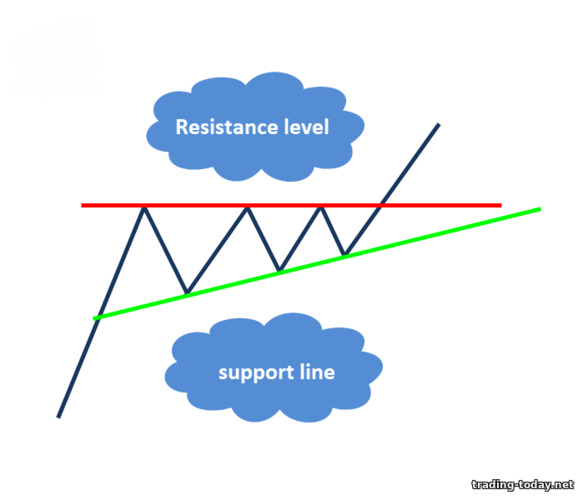


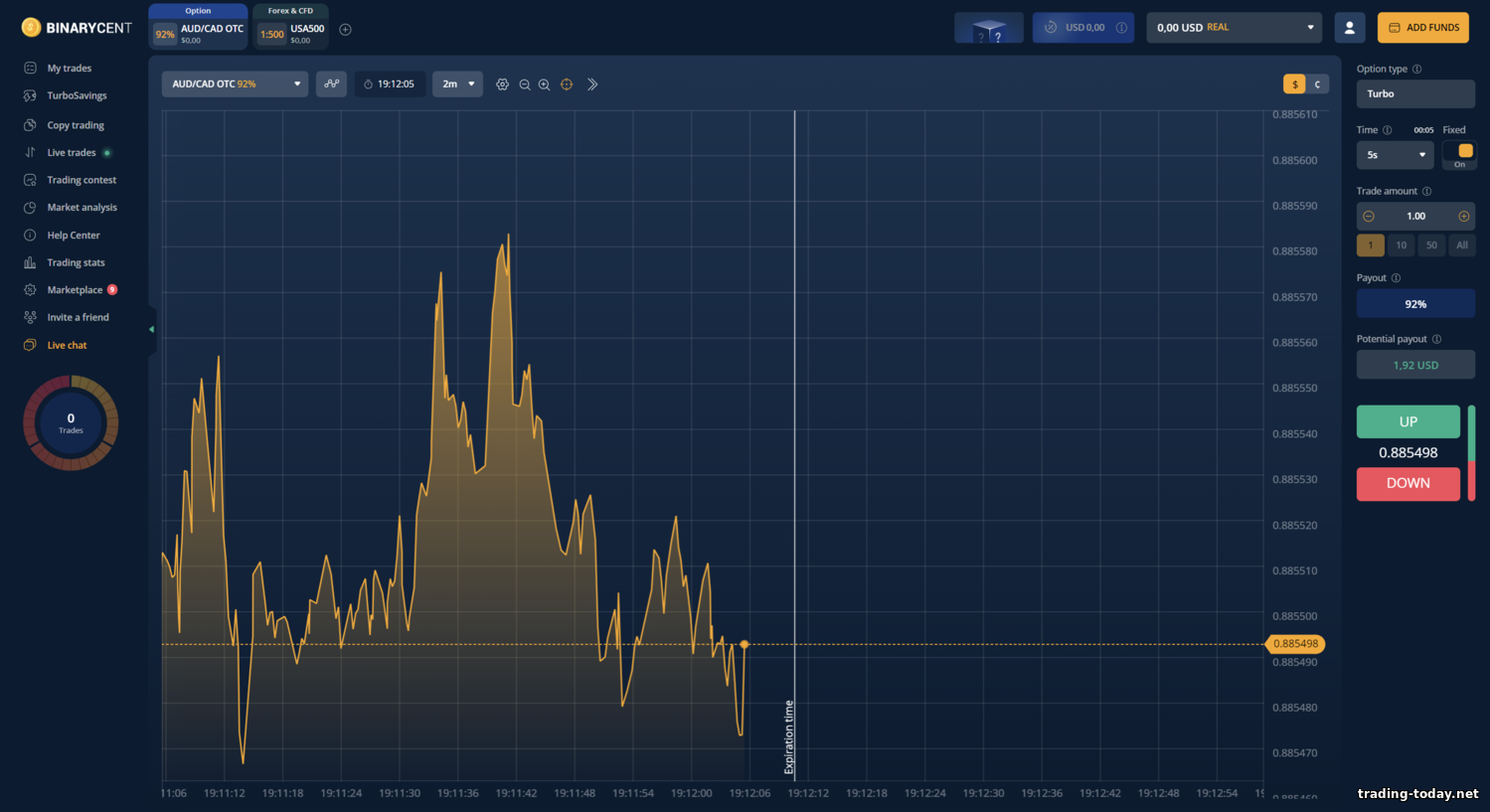

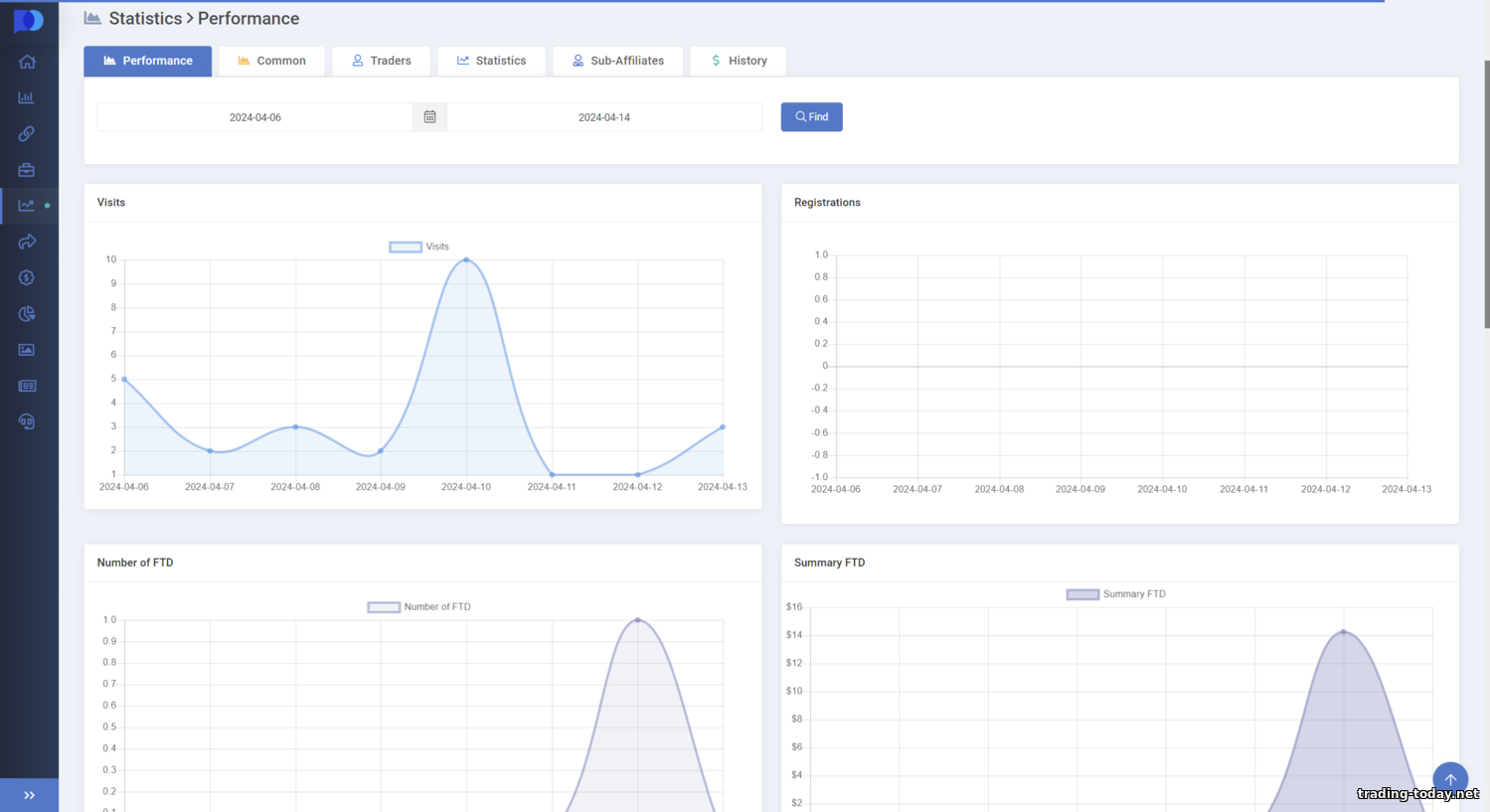
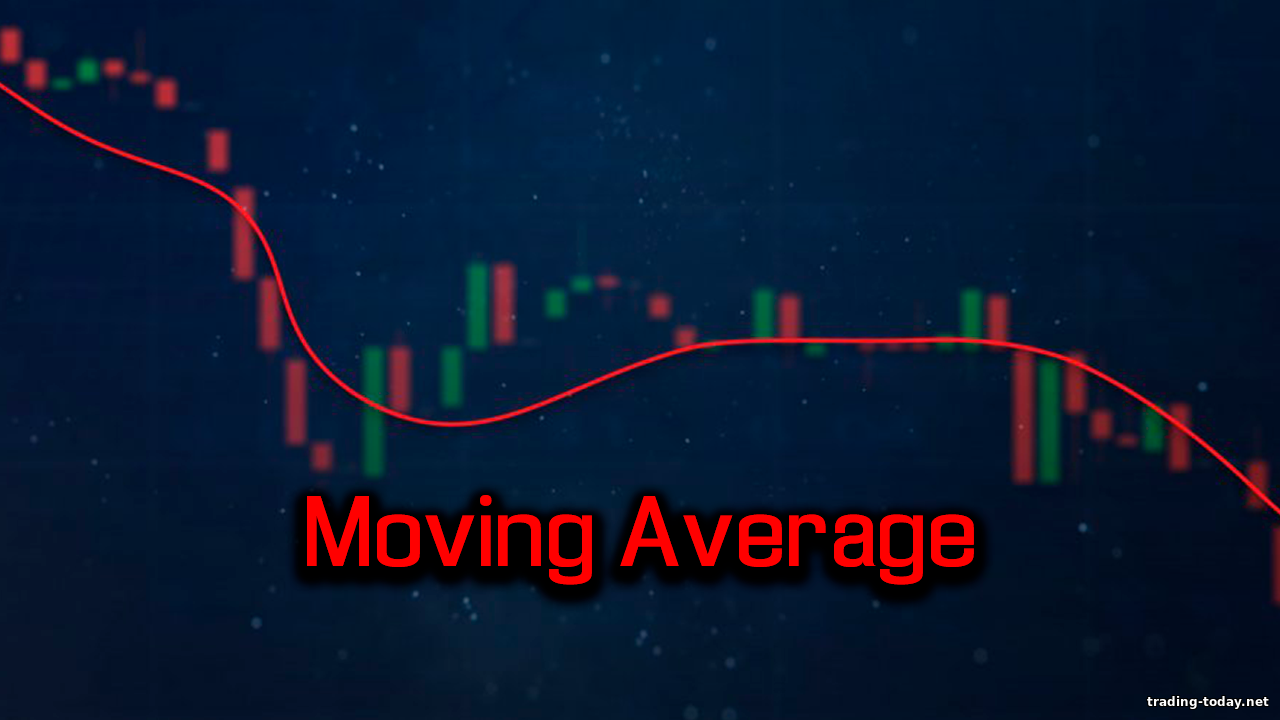


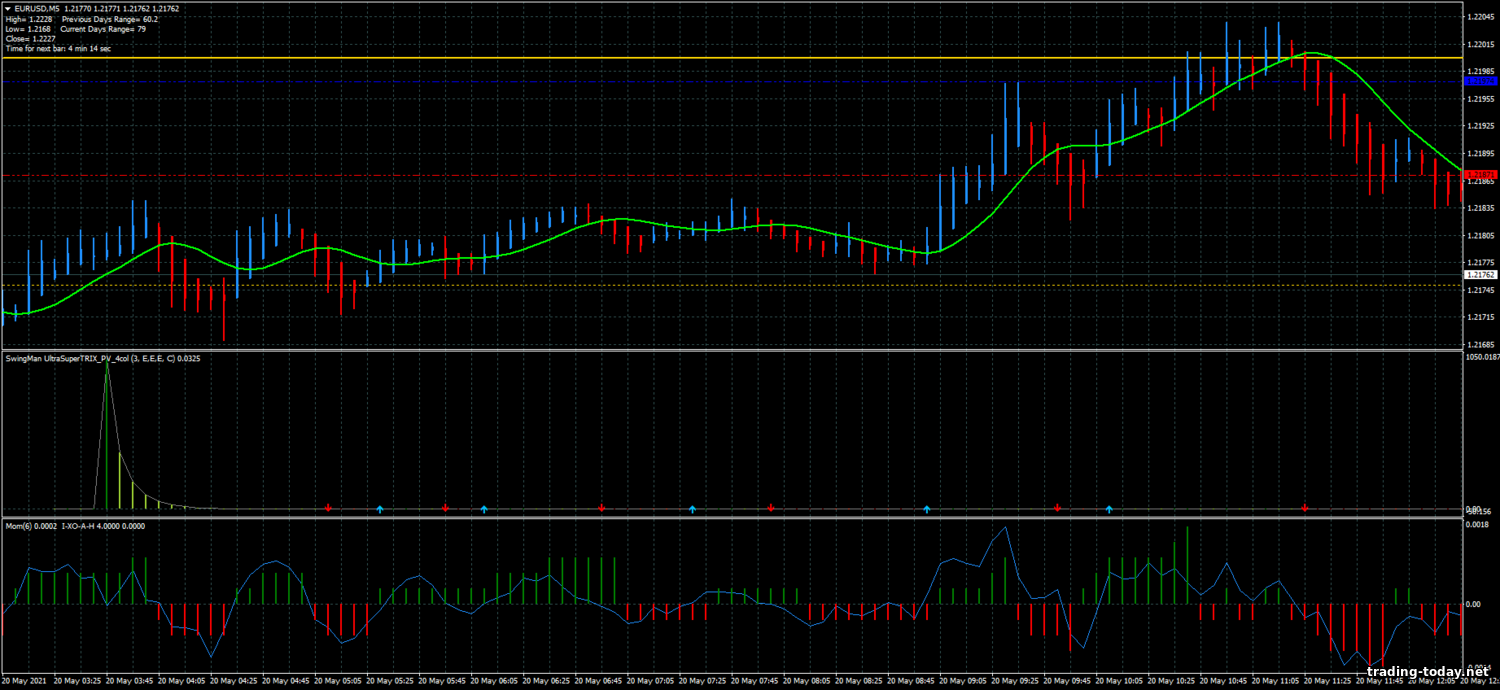
Reviews and comments